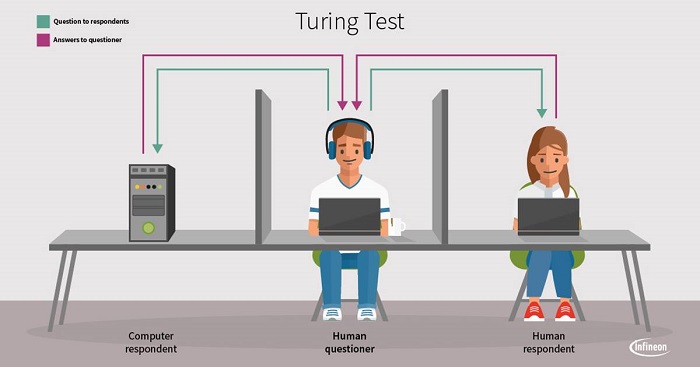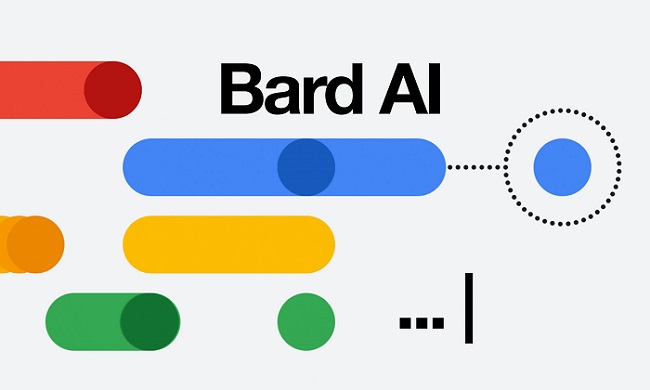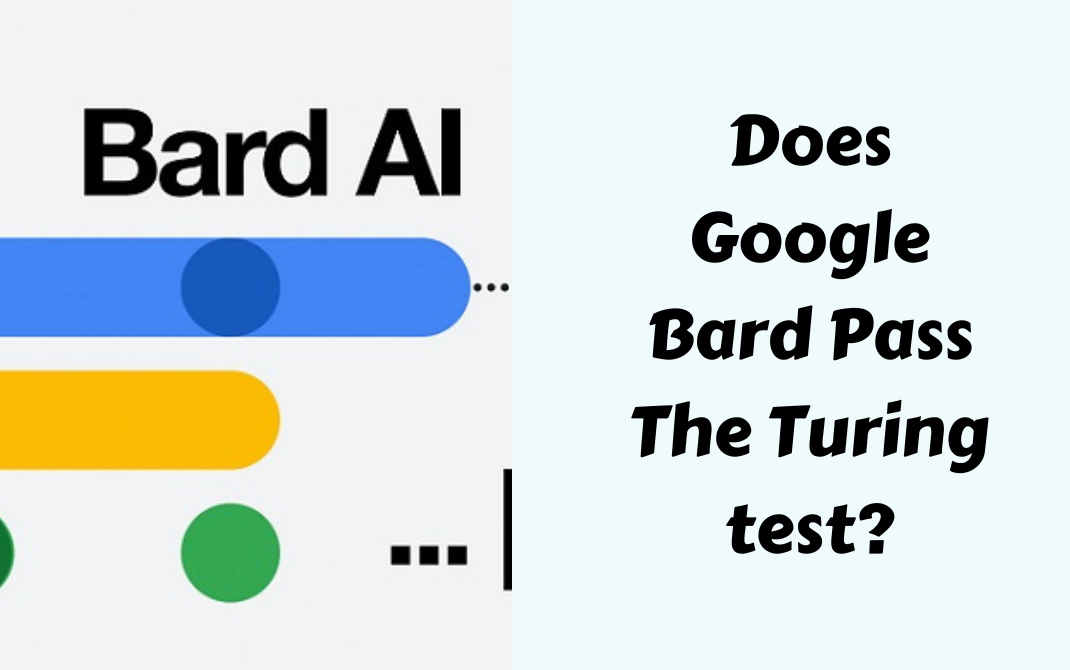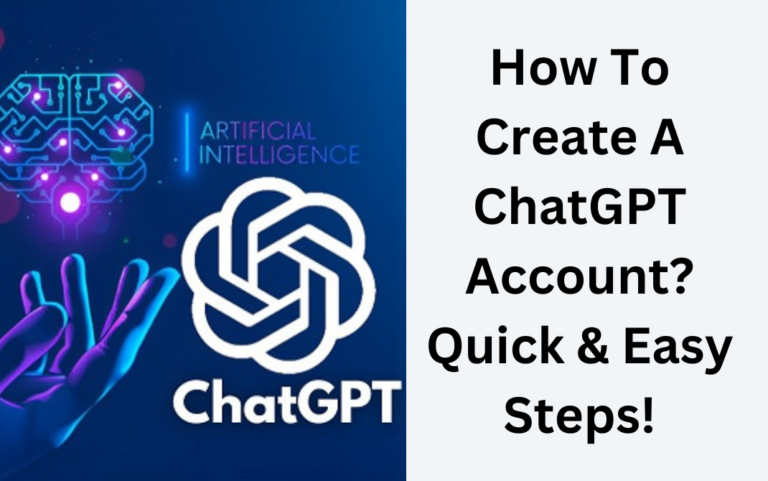Does Google Bard Pass The Turing test? See Here!
Wondering if Google Bard can pass the famous Turing test? Let’s take a ride! The Turing test, developed in 1950 by pioneering computer scientist Alan Turing, is a method for gauging whether artificial intelligence can exhibit behaviour equivalent to or indistinguishable from that of a human.
Passing the Turing test has long been considered a major milestone for AI systems. Google’s new AI chatbot, Bard, has undergone several Turing tests in recent months. This article will delve into Bard’s performance on the test and the implications it has for the future of Google’s AI ambitions.
What is the Turing Test?

The test was originally termed the ‘Imitation Game’ when first conceptualized by Alan Turing in 1950 in his landmark paper ‘Computing Machinery and Intelligence’ published in the academic journal Mind.
The fundamental premise put forth is that if a machine can be convincing enough in its conversational responses to fool a human evaluator into thinking it is human rather than artificial, then it can be said to possess intelligence.
How Does the Turing Test Work?
In practical terms, a human judge engages in a text or auditory conversation with both a human and a machine candidate while not knowing which is which.
If the judge cannot reliably distinguish the machine conversationalist from the human through dialogue, the machine is considered to have passed the Turing test.
Significance of Passing the Test
Passing the Turing test has long been acknowledged as an important theoretical threshold or milestone for artificial intelligence.
It demonstrates that the machine can engage fluently enough in human conversation to be indistinguishable from a real person, at least for a period of time. This approximately human-level conversational ability has been an elusive goal for AI.
Google Bard’s Performance on the Turing Test [Complete Analysis]
Bard has undergone several Turing tests by different evaluators in recent months. One well-known test was conducted by the Psychiatric Times, where a columnist engaged in dialogue with Bard and analyzed its responses.
Also Read: How To Get Bard AI In Google Search Results? – Easy Methods!
The columnist left it up to readers to evaluate for themselves whether Bard passed a Turing test based on their conversational abilities. Other AI researchers and experts have also tested Bard independently through interviews aimed at gauging its humanity.

1. Responses Analyzed
In these Turing tests, Google Bard has proven fairly adept at answering a wide range of questions in a natural, human-like manner. In many cases, its conversational responses were deemed to be just as coherent, nuanced, and articulate as those a human would provide.
Some observers felt its performance even exceeded a normal human’s in terms of providing thoughtful, detailed replies.
2. Results & Feedback
While testing is ongoing, the initial Turing tests indicate Google Bard has demonstrated proficiency in passing as a human in conversational contexts.
Its language capabilities appear sufficiently advanced to convince evaluators of its humanity through text discussions around the topics posed. However, Bard is still under active development, so its performance will continue to evolve.
3. Comparison to Other AI Like LaMDA
Google’s LaMDA system also recently displayed impressive human-like conversational skills in its interactions. However, unlike earlier chatbots designed specifically to mimic conversational abilities, LaMDA was developed as a more general language processing system not solely focused on human impersonation.
This makes its proficient Turing test performance especially notable, given mimicking humans was not its sole intended purpose.
4. Limitations of the Test Format
Some AI experts and commentators have argued the Turing test format has inherent limitations. They point out that it only examines somewhat superficial conversational abilities rather than capable of assessing true intelligence or general knowledge.
A machine could have very little deep comprehension of the world yet still pass by giving facially plausible responses.
5. Focus on Deception Rather than Intelligence
Other critics have noted that often, passing a Turing test relies more on tricks to appear human rather than exhibiting true intelligence. This brings up ethical issues around machines deceiving people, even if unintentionally.
The test has sometimes rewarded chatting bots that used scripted responses to fake human conversation rather than engage organically.
Potential Risks of Advanced Language Models
Recent highly advanced language models like Google’s LaMDA and OpenAI’s GPT-3 have stirred concerns due to their ability to produce extremely human-like text and speech.
While not necessarily designed to pass Turing tests, their impressive fluency heightens risks of misuse and manipulation if deployed without proper safeguards. Some argue more focus should be placed on making AI safe and beneficial versus highly convincing to humans.
What’s Next for Google Bard AI?
Google appears committed to continue advancing Bard’s conversational capabilities. It plans to expand the system’s knowledge and improve its language mastery through further training.
Bard is also slated to be incorporated into other Google services such as search, Gmail, and documents to provide an AI layer to generate responses. As development progresses, Bard’s Turing test proficiency will likely be re-evaluated to benchmark improvements.

Conclusion
In summary, initial Turing tests indicate Google’s Bard chatbot has achieved strong conversational abilities that allow it to pass as human in certain contexts. This represents an impressive feat of AI language mastery.
However, critics have rightly highlighted that the Turing test itself suffers from limitations, and risks exist in deploying AI systems that can seamlessly deceive people. As such, Bard and similar advanced language models should be evaluated not just on conversational cleverness but, more importantly, on their overall societal impacts.
Only through holistic assessment across multiple factors can the risks be mitigated and the full promise of this transformative technology be achieved. You can stay tuned with us for more content like this in the future!




